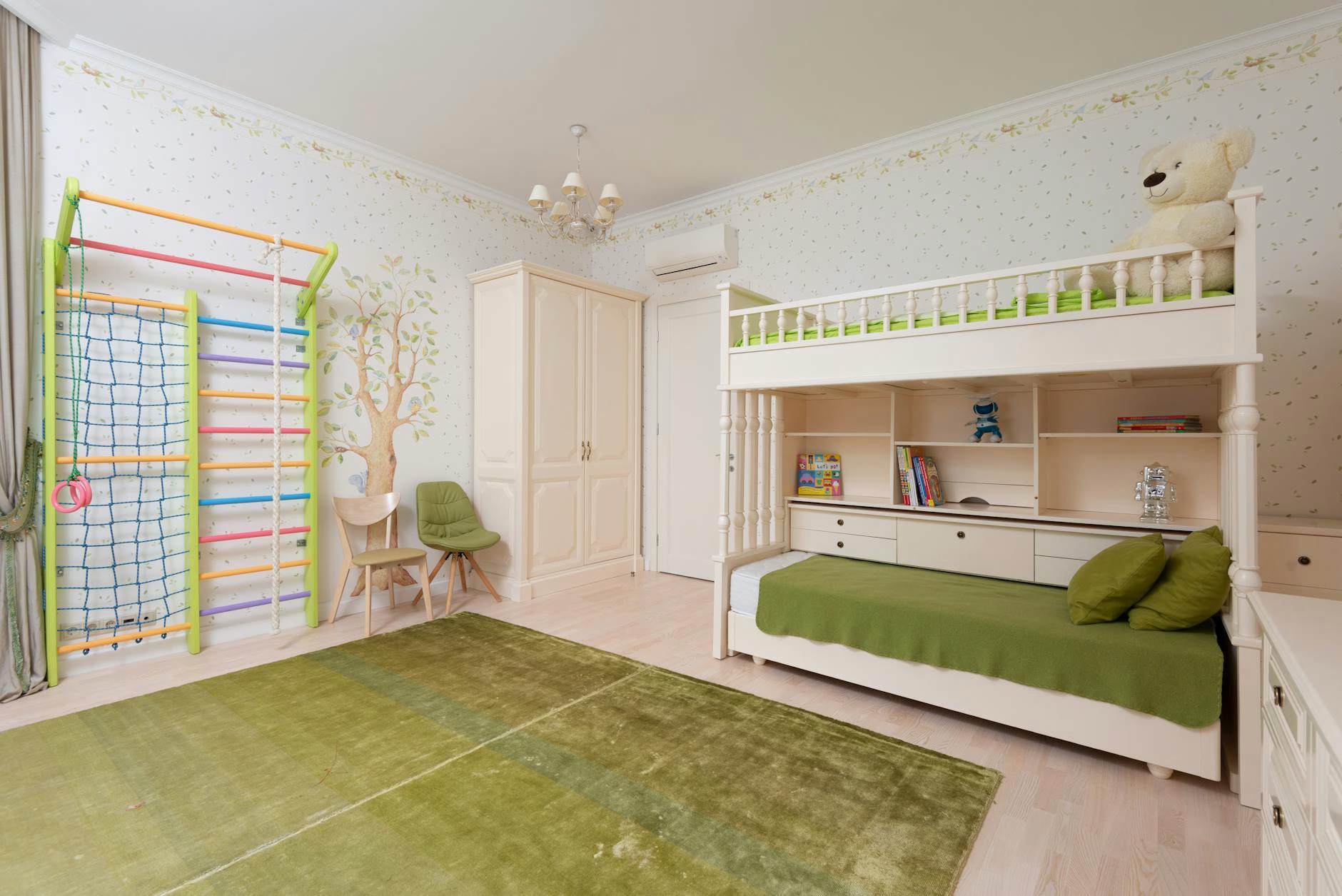Last Updated on Thursday, September 4, 2025 by Lavania Oluban

Creating the perfect bedroom for your child can feel like a balancing act.
While you still need to prioritise a good night’s sleep, your child’s bedroom should also be somewhere they can relax, get creative, and spend time with friends. While some extra details and design elements areoften welcome, adding too much can make the space overstimulating.
Fortunately, it is possible to create a bedroom that’s conducive both to playtime and peaceful moments. Here’s how to get the balance right.
Create separate zones
Playfulness and calmness call for different environments.
Dividing the room into distinct zones helps children to shift between different energy levels. It also supports a sense of routine, which can be particularly useful for younger children with keen imaginations!
For example, if your child likes playing with toys, it’s worth keeping a separate area for these with storage, seating, and perhaps a comfortable rug.
Use low shelving and lighting to define areas that encourage calm activities. Many families like to use an armchair for reading areas, since this can be borrowed for bedtime stories too.
Choose colours with personality
Colour palettes make a big difference when it comes to mood and effect.
Soft, neutral colours can induce a restful state of mind, while brighter or more vibrant accents can add playfulness. However, even if you’re trying to keep things calming, it’s important to keep it cheerful. By avoiding using anything too dull or dark, you’ll prevent the room from feeling either bland or intense.
In some of the latest kids’ bedroom trends, designers note a shift towards bold yet balanced colour palettes in bedroom décor.
Space-saving furniture
Inviting imagination often calls for creating more floor space.
Making creative furniture choices can create more space for play and storytelling, all while keeping rest central to the bedroom’s core design principles. For example, loft beds and high sleepers could help your child to create their own hideaway underneath their sleeping space.
Alternatively, kids bunk beds are great for sleepoversand perfectly suit busy households. They prevent the need for two side-by-side beds and open floor space too. Bunk beds are also easy to personalise with string lights, curtains and soft toys!
Integrating sleep-friendly routines
Sticking to consistent bedtime routines will help to support the natural progression from play into rest. Winding-down rituals are incredibly important for any family, but especially those looking to follow midweek routines.
Getting enough sleep is imperative for both children and parents alike. Here’s how much sleep children should get, according to the NHS:
• 10-13 hours for children between 3 and 5 years old
• 9-12 hours for children between 6 and 12 years old
• 8-10 hours for teenagers
From bedtime lighting to essential oil diffusers, there are plenty of ways to support rest after play. Just remember to keep a sense of routine at the heart of their daily wind-down before bed.
Smart and themed storage solutions
Finally, don’t underestimate the effect that clever storage solutions can have.
Low drawers, thematic shelving and purposeful displays can all help to keep things tidy while doubling as décor and play prompts. An aesthetically pleasing setup also supports a quick transition from play to bedtime, since tidiness helps to encourage a calm and relaxed state of mind.

